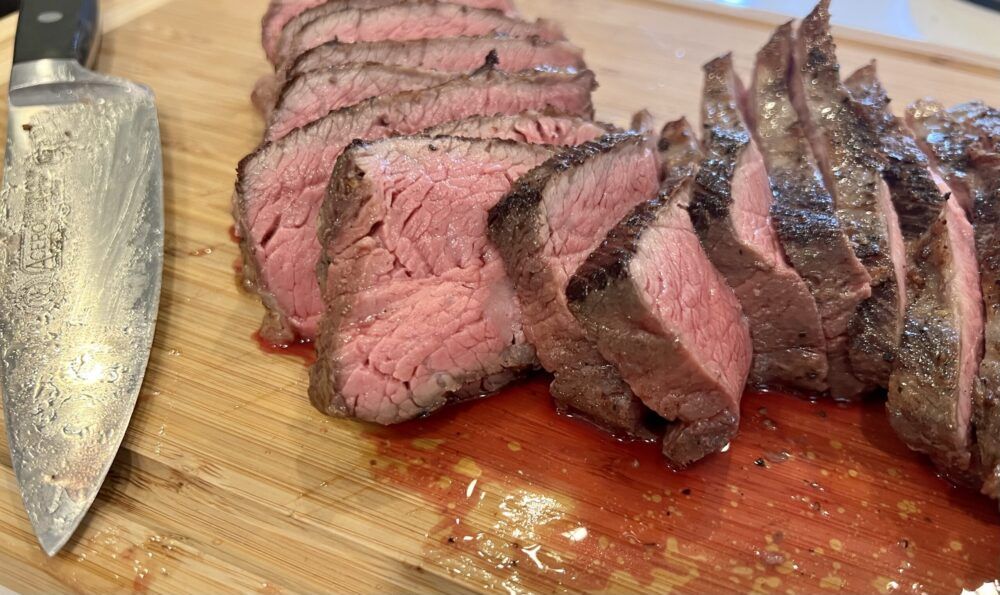Hello, everyone! If you’ve been following me on Instagram (@livin_4today), you know that I’m a big fan of Peter Attia’s podcast. His insights on health and longevity have always been super interesting to me. One topic that he frequently emphasizes is how grip strength is not just about physical power, but it’s a valuable proxy for overall health.
A Goldmine of Information
I recently started reading his book, “Outlive: The Science & Art of Longevity,” where he once again highlights the importance of grip strength. I’m about halfway through the book, and I must say, it’s a goldmine of information.
The Significance of Grip Strength
So today, I want to share with you some of the key takeaways on grip strength and its significance for our health and longevity. Grip strength isn’t just about opening that stubborn pickle jar or showing off at a local carnival’s test-your-strength booth. It’s a sign of your overall body strength and muscle mass, and believe it or not, it’s a pretty good indicator of your general robustness. Think about it: our hands are in play for so many daily tasks – from carrying groceries to typing on keyboards. Plus, a strong grip could be what saves you from a nasty fall.
How to Improve Your Grip Strength
Sounds interesting, right? But how can you improve your grip strength? Attia suggests mixing in some dedicated grip exercises alongside your usual weight training. Pull-ups and deadlifts are great, but for that extra hand strength, consider adding finger pull-ups and dumbbell grip paused pull-ups to your routine.
The Components of Grip Strength
Let’s break it down a bit more. Your grip consists of different components: crush grip, pinch grip, support grip, and extension grip. Each one of these plays a unique role, and there are various exercises to enhance each.
Crush Grip
Got a hand exerciser or a stress ball handy? Squeeze it with all you’ve got! This will improve your crush grip, the strength of your whole hand closing around something.
Pinch Grip
Next up, pinch grip, the strength of your fingers and thumb pinching something. You can train this by holding a weight plate, a book, or even a grip trainer between your fingers and thumb.
Support Grip
Support grip is about how long your hand can hold onto something, and exercises like hanging from a pull-up bar or doing pull-ups are ideal for this.
Extension Grip
Lastly, we have extension grip, the strength of your hand opening against resistance. You can train this by looping a rubber band around your fingers and thumb and spreading them apart.
Remember, these are just starting points, and it’s important to adjust these tips according to your age and ability level. The key here, as with any fitness endeavor, is consistency and progression. Begin with what you can do comfortably, and then increase the resistance or duration as you get stronger.
If you don’t have gym equipment, no worries. Get creative with items around your house, like grocery bags, rubber bands, or tennis balls!
The Power of Dead Hanging
Alright, let’s dive a bit deeper into one of my favorites, dead hanging. It’s an awesome exercise for your grip strength and a host of other benefits. Dead hanging is as simple as it sounds. You just hang from a bar with your arms fully extended, and… well, that’s it. But don’t let the simplicity fool you. This exercise is challenging.
It’s a fantastic way to improve your grip strength. Plus, dead hanging can help improve your shoulder health and mobility. It even works on
your core strength and stability as you try to keep your body from swinging around.
Now, how can you progressively improve your dead hang time? Start small. Hang for as long as you can, even if it’s just a few seconds. Rest, then repeat a few more times. As days pass, try to increase your hang time. You’ll be amazed at how quickly you progress.
Here is a Video Tutorial and Explanation of the Benefits:
Scaling Options
But what if you can’t support your full body weight just yet? No problem. We all start somewhere. You can scale it down by using a box or a bench under your feet to take off some of the weight. You’re still hanging, but with a bit of help from your legs. As you get stronger, you can use your legs less and less until you’re hanging all by yourself.
Another option is to use resistance bands. Loop one around the bar and place your foot or knee in it. The band will give you a little lift, making it easier to hang.
Now, to put some of this information into context, I thought it would be useful to share a table with some general guidelines for dead hang times. Remember, this is not just about strength but about our overall health and longevity.
General Guidelines for Dead Hang Times
| Age/Gender | Poor | Average | Above Average | |||
|---|---|---|---|---|---|---|
| Male | Female | Male | Female | Male | Female | |
| 20-29 | <30 seconds | <15 seconds | 60-90 seconds | 30-60 seconds | >120 seconds | >90 seconds |
| 30-39 | <20 seconds | <10 seconds | 45-75 seconds | 25-50 seconds | >105 seconds | >75 seconds |
| 40-49 | <15 seconds | <10 seconds | 30-60 seconds | 20-40 seconds | >90 seconds | >60 seconds |
| 50-59 | <10 seconds | <5 seconds | 20-45 seconds | 15-30 seconds | >60 seconds | >45 seconds |
| 60+ | <5 seconds | <5 seconds | 10-30 seconds | 10-20 seconds | >45 seconds | >30 seconds |
Please remember these are estimated ranges and not based on specific scientific studies. Individual performance can vary greatly due to factors like personal fitness level, body weight, and overall health status. Always aim for gradual and sustainable improvement in your own performance, regardless of these general guidelines.
The Importance of Finger Strength
Now, let’s talk about finger strength. It’s a crucial component of grip strength, especially for tasks that require precision and control. Musicians, artists, and climbers, among others, greatly benefit from having strong fingers.
One effective way to improve finger strength is by using fingerboards or hangboards. These tools have different sized edges and pockets that you can hang off, working your fingers in various positions. They’re particularly popular in the climbing community, but anyone can benefit from them.
Here are two products that I use (click on the picture and it will take you to amazon):
Start by hanging with all four fingers, then progress to three, two, and eventually, one. Remember to always warm up properly and listen to your body to avoid injury. Consistency is key, so try to incorporate fingerboard training into your routine a few times a week.
Conclusion
Give dead hanging a shot? It’s simple, effective, and you can do it pretty much anywhere you find a sturdy bar. From playgrounds to gymnasiums, the world is your training ground.
Let’s take our health into our own hands – literally – and keep working on that grip strength, one hang at a time!
Affiliate Disclaimer: Some of the links in this post may be affiliate links. This means if you click on the link and purchase the item, I will receive a small commission at no extra cost to you. The earnings help to support the costs associated with running this website. Thank you for your support!





